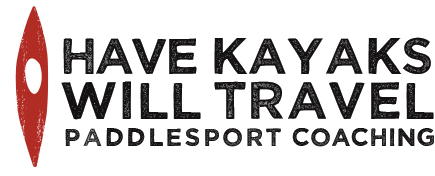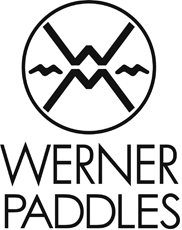On Friday, we found an “It’s a bird; it’s a plane; no….”-type situation in a store parking lot. People were standing in the cold, looking up, pointing and muttering odd things about crop circles and alien invasions.We had no camera, but Alec was able to get this photo with his iPhone, which doesn’t quite do justice to how dramatic it looked to the naked eye. After the phenomenon dissipated, we hurried home and pulled out our cloud books. We found an image like this one in Richard Hamblyn’s Extraordinary Clouds, which identified it as a fallstreak hole “created by the sudden freezing of an isolated patch of supercooled cloud, which falls away to leave a visible gap behind.” The dramatic red lighting was due to the sunset.It’s rare, in our urban environment, to find a group of strangers transfixed by a natural phenomenon. This fabulous cloud accomplished that, temporarily suspending the pressure to complete errands and get home. What a lovely way to end a work...
What’s wrong with this picture?
Here in Chicago, the Metropolitan Water Reclamation District is charged, in its own words, with “protecting our water environment.” How reassuring, then, to find this sign on the north branch of the Chicago River. “This waterway not suitable for: wading, swimming, jet skiing, water skiing/tubing, any human body contact.” Why is this river, which runs right through the heart of Chicago, so polluted? Because it’s the recipient of 1.2 billion gallons of undisinfected sewage effluent from our city’s wastewater treatment plants every day. The United States Clean Water Act and the Constitution of the State of Illinois both guarantee clean water. Two years ago, the Illinois Environmental Protection Agency called for disinfection as a part of the treatment of wastewater discharged into the Chicago River. Doing so would bring our city in line with the practices of other major US cities. But the MWRD is opposed to disinfection, claiming it would be too energy-intensive and too expensive. What’s being dumped into the Chicago River? According to the Natural Resources Defense Council, sewage-contaminated water contains adenovirus, coxsackie A and B and hepatitis A viruses, echovirus, norovirus, rotavirus, salmonella, shigella, E. coli, campylobacter, vibrio, legionalla, mycobacterium, Giarda lamblia and cryptosporidium. These pathogens can cause respiratory illness, meningitis, encephalitis, infectious hepatitis, typhoid, cholera, Legionnaire’s disease and gastroenteritis. No wonder this water isn’t “suitable” for “any human body contact.” If this bothers you, contact the Illinois Pollution Control Board. Let them know how you use the river and why you would prefer the water to be clean enough for “human body contact.”Send your letter to: John Therriault, Chief Clerk Attn: Docket R09-08 Illinois Pollution Control Board 100 W. Randolph St, suite 11-500 Chicago, IL 60601For more information, check out what the Friends of the Chicago River have written about this problem and how you can be a part of the...
Review: "Waves and Beaches"
Marooned by a combination of a healing arm (Sharon) and a malingering cold (Alec), we haven’t been able to paddle lately. That hasn’t kept us from reading about the waves we’re missing, however. In fact, we’re absorbed in two books by pioneering oceanographer Willard Bascom, who died in 2000 at the age of 83.Waves and Beaches: The Dynamics of the Ocean Surface was first published in 1964 as part of the Science Study Series of “up-to-date, authoritative, and readable science books” by the Physical Science Study Committee of Educational Services Incorporated. The original paperback cover. Bascom’s scholarly surf credentials are extensive. He began his career as an oceanographic engineer in 1945, when he joined the World War II Waves Project of the University of California at Berkeley. The initial goal of the project was to analyze the underwater shapes of beaches to understand how aerial images could help the military predict surf. Later, the project continued for scientific purposes. Bascom’s day-to-day work involved going out in huge, breaking waves in a “dukw” (amphibious truck) and taking depth measurements with a lead weight on a line, then correlating those readings with wave heights measured by markers and transits. Bascom, who had previously worked in mines and tunnels, had never before seen the Pacific Ocean. “Somehow, in innocence and ignorance, I was persuaded that fifteen-foot breakers smashing down on a thirty-two-foot tin boat were nothing to be disturbed about,” he writes. “In reality, of course, we underestimated the height and unexpectedly encountered breakers over twenty feet high.” The local Coast Guard considered these conditions unsuitable for anything other than emergency rescues. “But they had the advantage of appreciating the risk,” he notes dryly. His literal immersion in the science of surf was the start of a remarkable career in oceanography. He went on to direct the Mohole Project for the National Academy of Science and become president of Ocean Science and Engineering, Inc. And fortunately for us, he wrote this amazing book (among others). Waves and Beaches begins with chapters on wave theory and properties. He covers sea waves, storm waves, shallow-water waves and the longest waves of all: tides. In the process, he explains the physics of waves–why they break when they do, how their speed and force relate to their height and frequency–and how they are affected by shoreline and underwater features. If you don’t get hung up on the complicated calculations and instead read his explanations, you’ll find this book surprising accessible and, at times, surprising. Bascom disputes the existence of “undertow,” for example (though he takes rip tides very seriously and explains why they occur and how to survive if you’re caught in one). His explanations of...
Black Friday paddle
The stores opened early today for holiday shopping madness. The lake was open all night, so we didn’t have to wait in line. And we had the place to ourselves!Sharon stayed home to eat leftover stuffing. (Her arm is still healing.) But here are a few black-and-white photos from our Black Friday Paddle: Alec wearing his festive Black Friday wool hat. The Skyway on display. No holiday discounts there. Hannah surveys the merchandise. A skyscraper far from the Loop. So long and thanks for all the fish! Hannah and Lyn head...
A bad day paddling beats a good day recycling
For those who question the safety of kayaking, we have evidence that staying at home can be far more dangerous. Yesterday, while carrying a bin of recyclables to the alley, Sharon had a close encounter of the sutcherable kind with the top of an aluminum can. Sharon’a forearm, nine stitches later. Alec did get to put some of his Wilderness First Aid training to use. And since we were well within two hours of access to medical attention, he didn’t have to sew Sharon up himself. Thanks to our fabulous family physician, Robin Uchitelle, Sharon is on the mend. But she won’t be paddling for the next two...
Who says calm days can’t be fun?
Sharon paddles along a breakwall east of Navy Pier. “You wouldn’t want to go paddling today,” a friend said in a message on our voice mail. “The wind is light and the water is flat.”We missed her message because we were out on the lake. In fact, it was a lovely day. We could put in and take out anywhere we liked. We didn’t even have to pay for parking at North Avenue Beach. We saw only two boats: a tour boat heading for dry dock and a Coast Guard boat zipping to shore. Most of the buoys were gone. First we visited the four-mile crib, one of the city’s water intake locations. It’s a fortress-like structure with a Tim Burtonesque tower on top. The water was calm enough that Alec was able to bring out his non-waterproof camera. Alec shooting the four-mile crib. From there, we paddled down to 12th Street Beach. No sunbathers, no lifeguards, no seagulls. Just groups of elementary school students on field trips to the Museum Campus, who found us at least as interesting as the marine mammals in the Shedd Aquarium. We rounded out our paddle by visitng various lights and lighthouses along the breakwall east of Navy Pier. Sharon gives some scale to the boulders at the base of the lighthouse. We paid our respects to light number 1. By the time we returned to North Avenue Beach, the sun was getting lower (even though it was barely 3 p.m.) and the air was starting to cool. We landed on the empty beach, packed up in the abandoned parking lot, and returned to the chaos of rush hour traffic–two water creatures in a current of...
Review: "Sea Kayak with Gordon Brown"
Gordon Brown, photographed by Simon Willis. When Gordon Brown’s book, “Sea Kayak: A Manual for Intermediate and Advanced Sea Kayakers,” came out in December 2006, it was one of the few books not aimed at beginners. It was a survey of all the knowledge required of sea kayakers, infused with his personal points of view. Some of those same idiosyncratic perspectives are in Simon Willis’ new video, “Sea Kayak with Gordon Brown,” produced by Sunart Media and distributed in North America by Heliconia Press. This video uses a four-day journey along the west coast of the Scottish Isle of Skye as a frame for coaching sessions on sea kayak strokes. Gordon Brown’s companions include his wife, Morag, and five paddlers who range from beginner to low intermediate, along with the invisible cameraman and his “driver” who paddles from the back of his double. Gordon Brown and companions paddling along the west coast of the Isle of Skye. The scenery is stunning, and one of his companions, John, provides a wealth of knowledge about local flora, fauna, history and geology. Punctuating the trip are the coaching sessions, in which Gordon Brown demonstrates boat fit, edging, strokes and techniques for the viewer, not his companions on the journey. He explains as he demonstrates, and Willis employs a creative set of camera angles to allow viewers to see exactly what Gordon Brown’s body, boat and blade are doing. (He even goes inside the cockpit during the boat fit session to show how Gordon Brown’s feet and knees contact the boat.) Gordon Brown covers familiar basic strokes (forward stroke, forward and reverse sweep strokes, draw strokes) as well as more advanced maneuvers (bow rudder, cross-bow rudder, stern rudder), in both calm and rough water. His demonstration of linked turning and draw strokes while rock gardening is gorgeous. And his explanations are often unlike ones we’ve heard before. For example, he describes the forward sweep as a high brace position stroke and the reverse sweep as a low brace position stroke. He also suggests exercises for gaining comfort with some of the strokes, such as a beautiful demonstration of practicing eddyline turns with eyes closed. Each of the coaching sessions contains such a gem and makes this video well worth watching no matter what your paddling level. Gordon Brown, making rock gardening look easy. Beginners will find that this video won’t answer all their questions. For example, he explains edging and leaning without clarifying their roles in turning. We agree with his comment toward the end that the book is an ideal companion to the video. In fact, we feel that the book is stronger as a stand-alone source of information, while this video...
Doing battle with the gales of November
Today was National Cape Day, according to our son. Or perhaps it was. Regardless, Alec took the morning off to paddle with Scott in what promised to be conditions demanding near super powers, if not capes. Not all superheroes wear capes. Some wear drysuits. Scott models. The winds were out of the east-northeast at 25 knots, gusting to 28, and the waves were 5 to 7 feet and gnarly. An unusual current flowed from south to north along the beach at Montrose, perhaps the recirculating portion of the general north-to-south flow. Scott punching out or surfing backwards…hard to tell which (and who remembers?). Conditions like these can wear you out quickly. Before calling it quits, Alec and Scott paddled out to the end of the pier and looked south, where the full brunt of the wind was bouncing off the pier and the breakwall. There was clapatis as far as the eye could see. “If you paddled out there, you’d be on your own,” Scott mused. Scott explores the clapatis south of the pier. Conditions can kick up quickly on the Great Lakes and subside just as fast. By tomorrow night, the winds will shift around to the southeast and the waves will subside to 1 to 3 feet. Even superheroes can’t do anything about...
Neither cold nor waves nor gloom of fall….
Wave height matters. Paddler height, not so much. (Alec and Aaron, dressed for the weather.) Yesterday, Geneva Kayak Center held an end-of-season staff meeting. Part one was held on Lake Michigan in the company of three- to five-foot waves, 20-knot winds and plenty of geese. Needless to say, it was the nonverbal portion of the meeting. Part two was held while hungrily awaiting pizza delivery. Jim Tibensky chose to paddle an old-school whitewater boat to take maximum advantage of the waves. Some of us haven’t paddled together since the start-of-season staff paddle and meeting. We’ve led parallel paddling and teaching lives, coming and going at different times with different students. We hear about one another’s on-water time more often than we share it. So this was an opportunity to get out and play together. Parallel play, instructor style. The paddling season is far from over. For this group, a “small craft advisory” is a warning that it’s time to drop everything and get on the water. It’s also a guarantee that we and the kite boarders will have the lake to ourselves. No sailboats, motorboats or tour boats. Just us and the...
Back to the great indoors
The start of the Chicago Whitewater Association pool sessions is bittersweet. It’s great to see our river-running friends again, but it’s a sure sign that winter is coming. John Karsh offers some bank-based coaching. This is the 30th year of the CWA’s pool sessions here in Oak Park. We offer two 10-week sessions, during which we cover strokes, rolling, river-reading and safety. In the spring, students will be able to join us for a series of incrementally more challenging river trips. Who says paddling in a pool can’t be fun? For us, the CWA pool classes are an example of giving back to the sport that’s done so much for us. This is where we first learned to paddle and roll. Now we can help other people gain both skill and a love of the sport. And who can argue with 78-degree water in the middle of winter? Hannah doesn’t seem...







